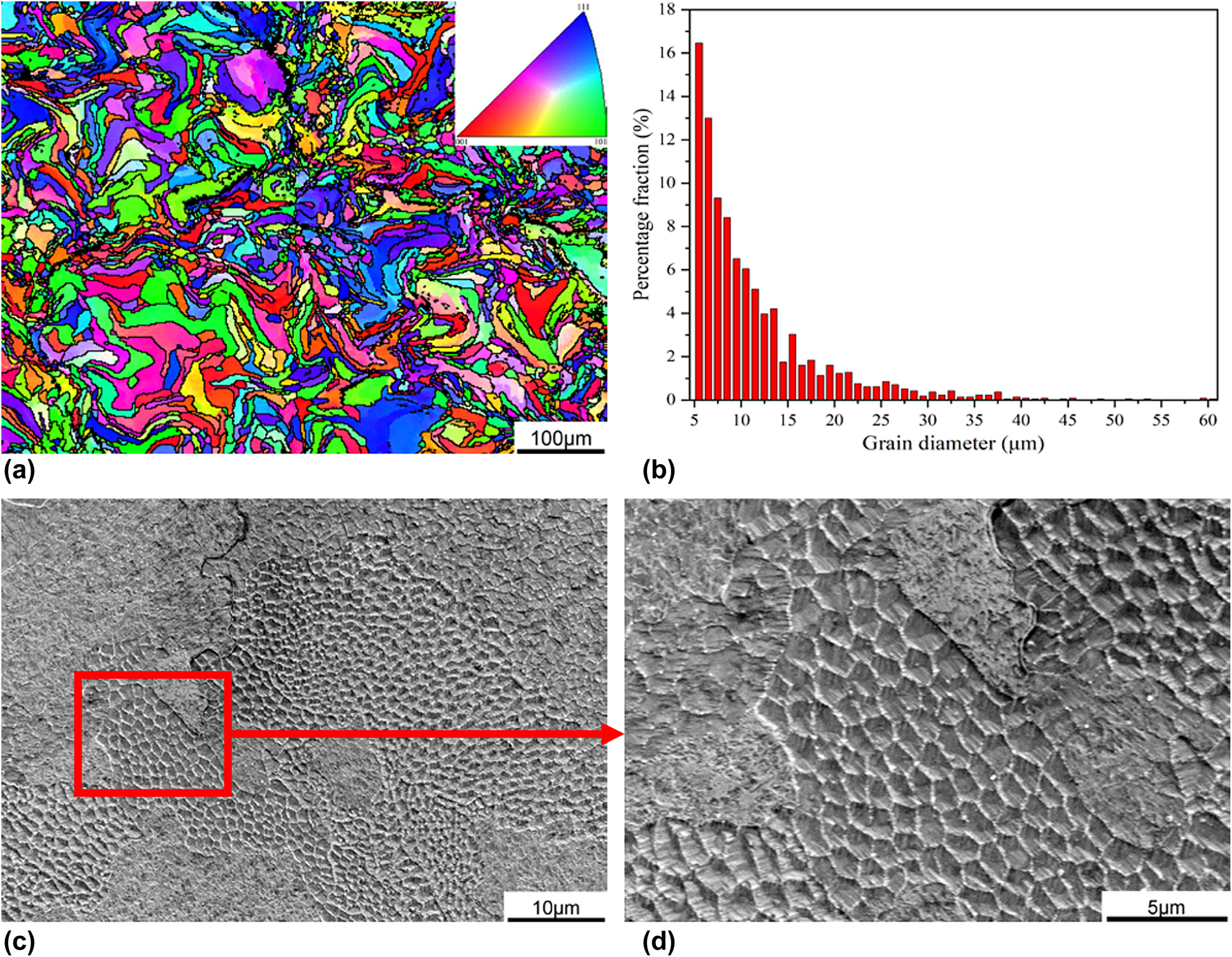Crossref Citations
This article has been cited by the following publications. This list is generated based on data provided by
Crossref.
Li, Tian-Xin
Miao, Jun-Wei
Guo, En-Yu
Huang, He
Wang, Jun
Lu, Yi-Ping
Wang, Tong-Min
Cao, Zhi-Qiang
and
Li, Ting-Ju
2021.
Tungsten-containing high-entropy alloys: a focused review of manufacturing routes, phase selection, mechanical properties, and irradiation resistance properties.
Tungsten,
Vol. 3,
Issue. 2,
p.
181.
Xue, Juanqin
Feng, Zheng
Tang, Jingang
Tang, Changbin
and
Zhao, Zhuang
2021.
Selective laser melting additive manufacturing of tungsten with niobium alloying: Microstructure and suppression mechanism of microcracks.
Journal of Alloys and Compounds,
Vol. 874,
Issue. ,
p.
159879.
Morcos, Peter
Elwany, Alaa
Karaman, Ibrahim
and
Arróyave, Raymundo
2022.
Review: additive manufacturing of pure tungsten and tungsten-based alloys.
Journal of Materials Science,
Vol. 57,
Issue. 21,
p.
9769.
Herashchenko, S.S.
Makhlai, V.A.
Garkusha, I.E.
Petrov, Yu.V.
Aksenov, N.N.
Kulik, N.V.
Yelisyeyev, D.V.
Shevchuk, P.B.
Volkova, Y.E.
Merenkova, T.M.
and
Wirtz, M.
2023.
FEATURES OF MODIFICATIONS IN THE RE-SOLIDIFIED SURFACES OF ADVANCED MATERIALS DUE TO HIGH-POWER PLASMA PULSES.
Problems of Atomic Science and Technology,
p.
15.
Li, Junfeng
Wu, Yunxiao
Xue, Lingfeng
and
Wei, Zhengying
2023.
Laser powder bed fusion in-situ alloying of refractory WTa alloy and its microstructure and mechanical properties.
Additive Manufacturing,
Vol. 67,
Issue. ,
p.
103493.
Pan, Shuai-Hang
Yao, Gong-Cheng
Cui, Yi-Nan
Meng, Fan-Shi
Luo, Chuan
Zheng, Tian-Qi
and
Singh, Gurminder
2023.
Additive manufacturing of tungsten, tungsten-based alloys, and tungsten matrix composites.
Tungsten,
Vol. 5,
Issue. 1,
p.
1.
2024.
Zarinejad, Mehrdad
Tong, Yunxiang
Salehi, Mojtaba
Mu, Chengfa
Wang, Nian
Xu, Yonglong
Rimaz, Sajjad
Tian, Lintao
Kuah, Kai Xiang
and
Chen, Xiaotong
2024.
Advancements and Perspectives in Additive Manufacturing of Tungsten Alloys and Composites: Challenges and Solutions.
Crystals,
Vol. 14,
Issue. 7,
p.
665.
Chen, Yu
Li, An
Zhou, Lvjun
Ye, Linfeng
Tan, Yang
Zhao, Tianyu
Du, Juan
and
Tang, Jun
2024.
Laser powder bed fusion in-situ alloying of W-Y alloy: Microstructure, mechanical properties and cracking suppression.
Materials Science and Engineering: A,
Vol. 916,
Issue. ,
p.
147362.
Ji, Lina
Wei, Shenyu
Wang, Zeli
Zhang, Yuanbin
Radhamani, A.V.
and
Seeram, Ramakrishna
2024.
Current status and potential strategies for crack-free tungsten by laser powder bed fusion: A review.
Journal of Manufacturing Processes,
Vol. 131,
Issue. ,
p.
2535.
Acemi, Cafer
Vela, Brent
Norris, Eli
Trehern, William
Atli, Kadri Can
Cleek, Conner
Arróyave, Raymundo
and
Karaman, Ibrahim
2024.
Multi-objective, multi-constraint high-throughput design, synthesis, and characterization of tungsten-containing refractory multi-principal element alloys.
Acta Materialia,
Vol. 281,
Issue. ,
p.
120379.
Funch, Cecilie Vase
and
Proust, Gwénaëlle
2024.
Laser-based additive manufacturing of refractory metals and their alloys: A review.
Additive Manufacturing,
Vol. 94,
Issue. ,
p.
104464.
Stajkovic, Janko
Kahl, Manuel
Kaserer, Lukas
Braun, Jakob
Distl, Benedikt
Mayr-Schmölzer, Bernhard
and
Leichtfried, Gerhard
2025.
Advancing Tungsten LPBF with Pyrometry: Assessing Parameter Stability Using Dimensionless Numbers and Pyrometric Data.
Journal of the Japan Society of Powder and Powder Metallurgy,
Vol. 72,
Issue. Supplement,
p.
S1103.
Awasthi, Prithvi D.
Dhal, Abhijeet
Michael, Fredrick N.
and
Mishra, Rajiv S.
2025.
Near crack free additive manufacturing of a novel W-Nb-C alloy.
Materials Research Letters,
Vol. 13,
Issue. 1,
p.
67.




